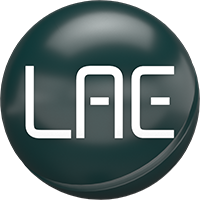We’re at the National Music Centre in Calgary, Alberta!
In part 1, Jason Tawkin of Studio Bell recounts the history of the Rolling Stones Mobile Studio in the UK and across Europe.
►About the Rolling Stones Mobile Studio
Conceived by Rolling Stones tour manager Ian Stewart and built in 1968, the Rolling Stones Mobile Studio (RSM) was the first ever professional mobile recording studio. The mobility of the truck and flexibility of its recording equipment allowed the RSM to capture some of the most iconic rock ‘n’ roll records of all time. The RSM is even referenced in the Deep Purple song “Smoke on the Water,” which tells the story of how the mobile studio was almost destroyed by a casino fire when the band recorded in Montreux, Switzerland. Acquired by the National Music Centre (NMC) in 2001, the RSM has since been restored and is now available to be used by artists. It is now parked next to the King Eddy stage, a historic live music venue, where it can record directly from the stage or connect to any of NMC’s unique live rooms. Learn more about recording at Studio Bell, home of the National Music Centre.
Jason explains how the RSM engineers used Twin M79 Tape Machines to record live performances from inside the RSM. The 2 tape machines allowed the engineers to prep the second machine to record as the first ran out of tape. With this setup, they could record all night without distributing the performance, provided that had enough tape to run the machines.


From the cab of the RSM bus, Robert and Jason discuss the early history of the bus and how it developed into the AIMS Project with Bill Wyman’s direction. In the 1990s, the RSM was put up for auction and sold to a gear dealer in the New York/New Jersey area. During this lull in analog recording technology, and due to the rapid rise of digital recording rigs, the National Music Centre was able to acquire the RSM in 2001. Robert discovers how the RSM made its way to Calgary.

Then we take an up close look in the RSM control room to discover what’s unique about the Helios console, and how it has brilliantly captured the sound of countless recording artists over the last 50 years. Jason highlights the unique HiFi sound of the Helios console that provides a flat frequency response up to 180kHz. This allows overtones and harmonics to be more truly reproduced and results in the characteristic Helios tone.

Join us for part 2 where Jason explains why the RSM will continue to make great recordings into the future.
►About Studio Bell
Studio Bell, home of the National Music Centre (NMC), is more than a museum. Tour five floors of exhibitions that tell the story of music in Canada, see historic musical treasures, and make sure to check out a concert at one of several live music spaces. Already a recipient of multiple architectural awards, Studio Bell is the stunning home for music in Canada. For more information about NMC’s onsite activities, please visit studiobell.ca. To check out the NMC experience online, including video-on-demand performances, made-in-Canada stories, and highly entertaining educational content, visit their website!




